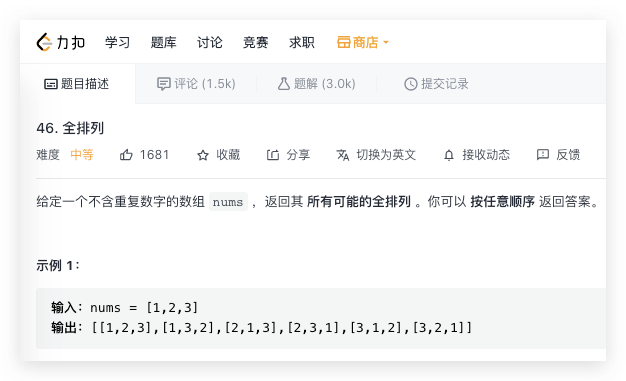
itertools是python内置的标准模块,提供了很多简洁又高效的专用功能,使用得当能够极大的简化代码行数,同时所有方法都是实现了生成器函数,这就意味着极大的节省内存。
itertools提供的功能主要分为三大块,以最新版本的3.10为例:
- 对可迭代对象无限迭代,无限输出
- 对可迭代对象有限迭代
- 对可迭代对象排列组合
方法如下:

导入包
>>> from iteratortools import *
无限迭代
iteratortools.count(start=0, step=1)
数值生成器,可以指定起始位置和步长,并且步长可以为浮点数。无限输出,一直累加,在例子中需要边睡眠1s边输出。
>>> import time
>>> iterator = count(4, 0.5)
>>> for i in iterator:
... print(i)
... time.sleep(1)
...
4
4.5
5.0
5.5
6.0
6.5
7.0
7.5
iteratortools.cycle(iteratorable)
无限循环取出可迭代对象里的元素
>>> a = cycle("ABCD")
>>> import time
>>> for i in a:
... print(i)
... time.sleep(1)
...
A
B
C
D
A
B
C
D
iteratortools.repeat(object[, times])
不断重复输出整个object,如果指定了重复次数,则输出指定次数,否则将无限重复。
>>> iterator = repeat('hello world', 10)
>>>
>>> for i in iterator:
... print(i)
...
hello world
hello world
hello world
hello world
hello world
hello world
hello world
hello world
hello world
hello world
有了这个神器,对输出10次hello world这种问题又有一种新解法
有限迭代
iteratortools.accumulate(iteratorable[, func, *, initial=None])
返回对列表中元素逐项的操作,操作有:
- 累加,返回累加到每一项的列表
- 累乘,返回累乘到每一项的列表
- 最小值,返回到当前项的最小值
- 最大值,返回到当前项的最大值
>>> [2, 4, 8, 1, 3, 5]
[2, 4, 8, 1, 3, 5]
>>> arr = [2, 4, 8, 1, 3, 5]
>>>
>>> add = accumulate(arr)
>>>
>>> list(add)
[2, 6, 14, 15, 18, 23]
>>>
>>> max = accumulate(arr, max)
>>> list(max)
[2, 4, 8, 8, 8, 8]
>>>
>>> import operator
>>> mul = accumulate(arr, operator.mul)
>>> list(mul)
[2, 8, 64, 64, 192, 960]
>>>
>>> min = accumulate(arr, min)
>>> list(min)
[2, 2, 2, 1, 1, 1]
iteratortools.chain(*iteratorables)
将多个可迭代对象构建成一个新的可迭代对象,统一返回。类似于将多个对象链成一条串
>>> iterator = chain([1,2,3],['a','b','c'],(5,6,7))
>>> list(iterator)
[1, 2, 3, 'a', 'b', 'c', 5, 6, 7]
优点:可以将多个可迭代对象整合成一个,避免逐个取值
chain.from_iteratorable(iteratorable)
将一个迭代对象中将所有元素类似于chain一样,统一返回。
>>> chain.from_iteratorable(['abc','def'])
<iteratortools.chain object at 0x1083ae460>
>>> iterator = chain.from_iteratorable(['abc','def'])
>>> list(iterator)
['a', 'b', 'c', 'd', 'e', 'f']
iteratortools.compress(data, selectors)
按照真值表筛选元素
>>> arr = [1,2,3,4]
>>> selectors = [1,0,1,0]
>>>
>>> iterator = compress(arr, selectors)
>>>
>>> list(iterator)
[1, 3]
iteratortools.dropwhile(predicate, iteratorable)
按照条件筛选,丢弃掉第一次不符合条件时之前的所有元素
>>> arr = [1,2,3,2,1,2,1]
>>> iterator = dropwhile(lambda x: x<3, arr)
>>> list(iterator)
[3, 2, 1, 2, 1]
iteratortools.takewhile(predicate, iteratorable)
根据predicate条件筛选可迭代对象中的元素,只要元素为真就返回,第一次遇到不符合的条件就退出。
按照条件筛选,丢弃第一次遇到不符合条件之后的元素。行为类似于上一个dropwhile,区别在于丢弃的选择不同。
iteratortools.filterfalse(predicate, iteratorable)
保留不符合条件的元素,返回迭代器
>>> arr = [1,2,3,4,5]
>>> iterator = filterfalse(lambda x:x<3, arr)
>>> list(iterator)
[3, 4, 5]
iteratortools.groupby(iteratorable, key=None)
按照指定的条件分类。输出条件和符合条件的元素。
>>> iterator = groupby(arr, lambda x: x>3)
>>> for condition ,numbers in iterator:
... print(condition, list(numbers))
...
False [1, 2, 3]
True [4, 5]
groupby时传入的数组是否有序很关键,对于有序的数组,groupby之后会产生两个记录,如[1,2,3,4,5,6]按照大于4区分,得到的就是
False [1,2,3]
True [4,5,6]
如果列表是无序的,如[1,3,5,2,4,6],那么得到的就是
True 1
True 3
False 5
True 2
False 4
True 6
iteratortools.islice(iteratorable, start, stop[, step])
对迭代器进行切片,老版本中不能指定start和stop以及步长,新版本可以。
>>> iterator = count()
>>> slice_iterator = islice(iterator, 10, 20, 2)
>>> list(slice_iterator)
[10, 12, 14, 16, 18]
iteratortools.starmap(function, iteratorable)
将function作用于可迭代对象上,类似于map函数
iteratortools.tee(iteratorable, n=2)
从一个可迭代对象中返回 n 个独立的迭代器
>>> iterator = tee(arr)
>>> for i in iterator:
... print(type(i), list(i))
...
<class 'iteratortools._tee'> [1, 2, 3, 4, 5]
<class 'iteratortools._tee'> [1, 2, 3, 4, 5]
iteratortools.zip_longest(*iteratorables, fillvalue=None)
创建一个迭代器,从每个可迭代对象中收集元素。如果可迭代对象的长度未对齐,将根据 fillvalue 填充缺失值。
迭代持续到耗光最长的可迭代对象。大致相当于:
>>> iterator = zip_longest("ABCD", "xy", fillvalue="-")
>>> list(iterator)
[('A', 'x'), ('B', 'y'), ('C', '-'), ('D', '-')]
排列组合迭代
iteratortools.product(*iteratorables, repeat=1)
生成多个可迭代对象的笛卡尔积
大致相当于生成器表达式中的嵌套循环。例如, product(A, B) 和 ((x,y) for x in A for y in B) 返回结果一样。
>>> iterator = product("123", "abc")
>>> list(iterator)
[('1', 'a'), ('1', 'b'), ('1', 'c'), ('2', 'a'), ('2', 'b'), ('2', 'c'), ('3', 'a'), ('3', 'b'), ('3', 'c')]
将可选参数 repeat 设定为要重复的次数。例如,product(A, repeat=4) 和 product(A, A, A, A) 是一样的
iteratortools.permutations(iteratorable, r=None)
由 iteratorable 元素生成长度为 r 的排列。元素的排列,类似于给一个[1,2,3],选取其中两个元素,一共有多少种组合方法?不要求元素排列之后的位置。
>>> iter = permutations([1,2,3], r=3)
>>> list(iterator)
[(1, 2, 3), (1, 3, 2), (2, 1, 3), (2, 3, 1), (3, 1, 2), (3, 2, 1)]
这个方法能够完美解决算法中的全排列问题,简直是量身定做。如果早知道这么简单,当年考算法也不会。。,哎
可参见leetcode46题:https://leetcode-cn.com/problems/permutations/

iteratortools.combinations(iteratorable, r)
返回由输入 iteratorable 中元素组成长度为 r 的子序列。元素不可重复使用。子序列是要求元素在排列之后和之前的相对位置不变的。1,2,3中3在1的后面,子序列中3也一定在1的后面。
>>> iterator = combinations([1,2,3,4], r = 3)
>>> list(iterator)
[(1, 2, 3), (1, 2, 4), (1, 3, 4), (2, 3, 4)]
>>> iterator = combinations([1], r = 3)
>>> list(iterator)
[]
这个方法可以曲线解决组合总数问题
https://leetcode-cn.com/problems/combination-sum/

iteratortools.combinations_with_replacement(iteratorable, r)
返回由输入 iteratorable 中元素组成的长度为 r 的子序列,允许每个元素可重复出现
>>> iter = combinations_with_replacement([1,2,3,4], r=2)
>>> list(iter)
[(1, 1), (1, 2), (1, 3), (1, 4), (2, 2), (2, 3), (2, 4), (3, 3), (3, 4), (4, 4)]
>>> iterator = combinations_with_replacement([1], r=3)
>>> list(iterator)
[(1, 1, 1)]